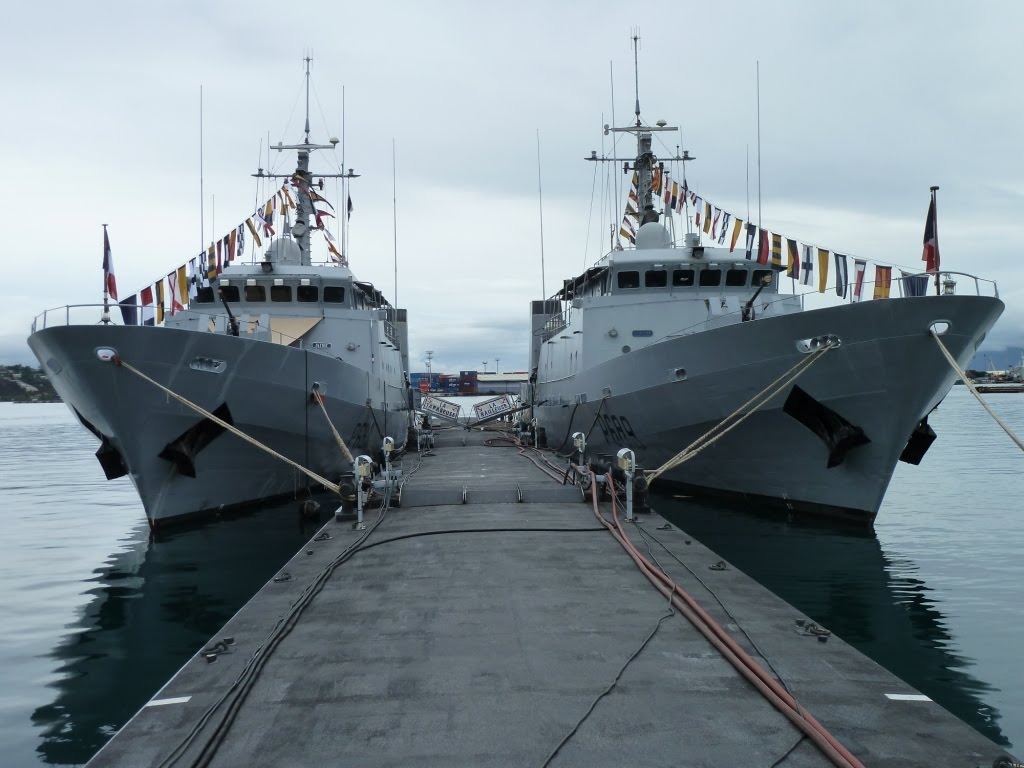Artyom Lukin: NATO’s Asia-Pacific Dilemma
In
Log in if you are already registered
The ongoing shift of the global geopolitics’ center of gravity toward the Asia-Pacific raises the question about the role in this region of the world’s most powerful political-military alliance – NATO. To be more specific, this question is about the potential role for NATO’s European wing, because the United States has been a major Pacific power since the mid-19th century and, in recent years, has made the Asia-Pacific the top foreign policy priority. Washington also would like its European allies to take an active part in Obama’s “Pacific pivot”.
In January 2013, during his European tour, the US Secretary of Defense Leon Panetta called on the Europeans to take a broader view on the North Atlantic alliance’s geographic area of activities: “Europe should join the United States in increasing and deepening defense engagement with the Asia-Pacific region… The bottom line is that Europe should not fear our rebalance to Asia, Europe should join it.”[1] Such invitations reflect Washington’s general line on NATO, seeking the expansion of geographical and functional areas of responsibility for the alliance, which should ideally become an efficient “global cop”.[2]
Are the other NATO members ready to positively respond to such calls? The alliance’s operations in Afghanistan, Libya, as well as in the Indian Ocean and the Gulf of Aden, seem to suggest that NATO is capable of missions beyond the North Atlantic area, which, under The North Atlantic Treaty of 1949, was to be the alliance’s area of responsibility. But does this mean that the NATO countries are seriously considering the alliance’s involvement in Asia-Pacific affairs?
It is true that the recent years have seen more interaction between NATO and a number of Asia-Pacific states, particularly Australia, Japan, and South Korea, which is not surprising given that they are America’s chief treaty allies in the Pacific. Moreover, Japan, New Zealand, Malaysia, Mongolia, Australia, Singapore and South Korea sent their troops to Afghanistan, while the latter three have contributed to the Operation Ocean Shield off the Horn of Africa.[3]
However, it is obvious that it is not pirates or the Afghan Talibs who pose the main strategic challenge to America and the US-led West. Rather, this challenge is represented by China. Will NATO be able to contribute to counter-balancing the rising China? Or, to put this question bluntly, what will NATO do if a conflict erupts between the United States and China in the Asia-Pacific? One may even ask: does NATO have a mandate to intervene in Asia-Pacific conflicts, given that Articles 5 and 6 of The North Atlantic Treaty state that the alliance must provide help, if one or more of its members are attacked in the “North Atlantic area” – “Europe or North America”? Some NATO analysts believe that the interpretation of these clauses should be broadened to encompass the Pacific coast of the United States and Canada, as well as their possessions in the Pacific, all the way to Wake Atoll (which is 12045kms/7485 miles from Brussels but only 3207kms/1993 miles from Tokyo).[4]
However, the central problem does not lie in the legal parsing of the North Atlantic Treaty. Rather, the basic obstacle to NATO’s Pacific role is that most European NATO members lack both capabilities and appetite to assume any strategic commitments in the Asia-Pacific.
The predominant majority of NATO members, with the important exception of Britain, are not at all enthusiastic about the globalist agenda for NATO which is promoted by Washington. The main voices against it are France and Germany. Paris and Berlin worry that this kind of strategic globalism will weaken NATO’s internal unity and damage relations with Moscow and Beijing. As for the new NATO members in Central and Eastern Europe, they see the alliance’s main mission as being Europe’s protector from the perceived “Russian threat”. [5] The Russian bear is still a much bigger worry to Warsaw, Riga, and some other Eastern European capitals than the Chinese dragon.
For both old and new European NATO members, the Asia-Pacific is not a truly vital region. Oleg Ivanov, a professor at the Russian Foreign Ministry’s Diplomatic Academy, is skeptical about NATO’s willingness to get directly involved in any potential Asia-Pacific conflicts, citing informal conversations with NATO diplomats and military persons.[6]
Apart from differing perceptions of threats and strategic priorities, NATO’s Pacific role is constrained by material limitations. Due to its economic malaise, Europe is cutting down its military expenditures. Preparing for a Pacific war is obviously out of the question. Furthermore, if fighting does break out in the Asia-Pacific, the principal battle theater will most likely be maritime. Out of 28 NATO countries only 13 have blue water navies. Europe has just one big deck aircraft carrier (French Charles de Gaulle). By some expert assessments, NATO could hardly offer more than a token military presence in the Pacific.[7]
Finally, there are more fundamental factors why NATO’s European members are not going to look East. Continental Europe seems to have almost completely lost what Hans Morgenthau termed animus dominandi. In other words, Europeans have run out of the energy of expansion and conquest. They are now all but reconciled to the prospect that the world dominance will be contested between America and China. The Europeans do not want to get engaged in this contest, basically wishing to be left alone. It appears that all that Europe seeks is a comfortable, tranquil, and inward-looking, existence.
Nonetheless, Europe is unlikely to be left alone and just stay serenely on the sidelines. If a battle of giants, China and the United States, kicks off in the Asia-Pacific, the Americans are unlikely to demand military assistance, warships and troops from its European allies. Washington is well aware that the only NATO ally who would be willing, and able, to provide meaningful combat support will be Great Britain. Yet the United States is certain to request Europe to join the economic blockade of China, up to the full stopping of trade with Beijing. Geo-economic strangulation of China by a naval blockade has been increasingly discussed in the United States as an effective way of dealing with Beijing in case it crossed certain red lines.[8]

Photo caption: http://www.panoramio.com
France may have a naval base on Tahiti, but will it want to interfere in a potential clash in the Pacific?
Given that China is Europe’s largest source of imports and second largest (following the United States) destination of exports, with the bilateral trade volume of 434 bln euro in 2012, the anti-China blockade will be an extremely hard blow to the European economy. In fact, Europeans will be faced with a dilemma, having to choose between Atlantic solidarity and their own prosperity. If the China embargo is total and lasts long enough, it cannot be ruled out that at least some European NATO members would stop enforcing it and resume trade. This would de facto spell the end of NATO as an effective alliance. Incidentally, while the sea lanes leading to China will be blocked by the American navy, those European states that would dare to withdraw from the US-led embargo could use land communications passing through Russia and its Eurasian allies.
It is apparent that, despite the pleas to NATO to shift attention toward the Asia-Pacific, the United States does not expect this to actually happen, which makes it all the more urgent for Washington to find more reliable allies or at least partners. One way to do it is to reformulate the geo-political concept of the Asia-Pacific in a more expansive way. For example, it is telling that in a recent major speech Vice President Joseph Biden emphasized the Asia-Pacific identity of not only India but also the Latin American countries having the Pacific coast. The motive is clear: to cope with the Chinese challenge Washington needs to forge a coalition involving as many countries as possible – enlisting India, East Asian states, Oceania, and the Americas. It is this potential Indo-Pacific coalition – in still unknown country combinations – that may replace NATO as the main alliance of the twenty-first century.
Artyom Lukin is Associate Professor of International Relations and Deputy Director for Research at the School of Regional and International Studies, Far Eastern Federal University (Vladivostok, Russia). Email: artlukin@mail.ru
[2] The idea of “global NATO” was first introduced in 2004 by the US ambassador to NATO Nicholas Burns. In 2006 his successor Victoria Nuland said that NATO “should focus on deepening its co-operation with countries such as Australia and Japan and becoming a genuine globally deployable force” (Daniel Dombey. “US Chooses Awkward Time to Transform NATO,” Financial Times. 23 Jan. 2006).
[3] Arthur Chan. The Case for Enhanced NATO Engagement in the Asia-Pacific. http://blog.streitcouncil.org/?p=1280
[5] Ioanna-Nikoletta Zyga. Emerging Security Challenges: A Glue for NATO and Partners? Research Paper No 85. NATO Defense College, Nov. 2012. www.ndc.nato.int
[6] Oleg Ivanov. “The United States’ Political-Military Strategy in the Asia-Pacific.” Mir I Politika. July 2013, p. 144-146. (in Russian)
[7] Robert M. Farley. European Powers No Longer Have Role Across Pacific. Aug. 14, 2012. http://www.globaltimes.cn/content/726942.shtml
[8] Sean Mirski. “Stranglehold: the context, conduct and consequences of an American naval blockade of China.” Journal of Strategic Studies, 2013. DOI: 10.1080/01402390.2012.743885, http://dx.doi.org/10.1080/01402390.2012.743885




